Introduction
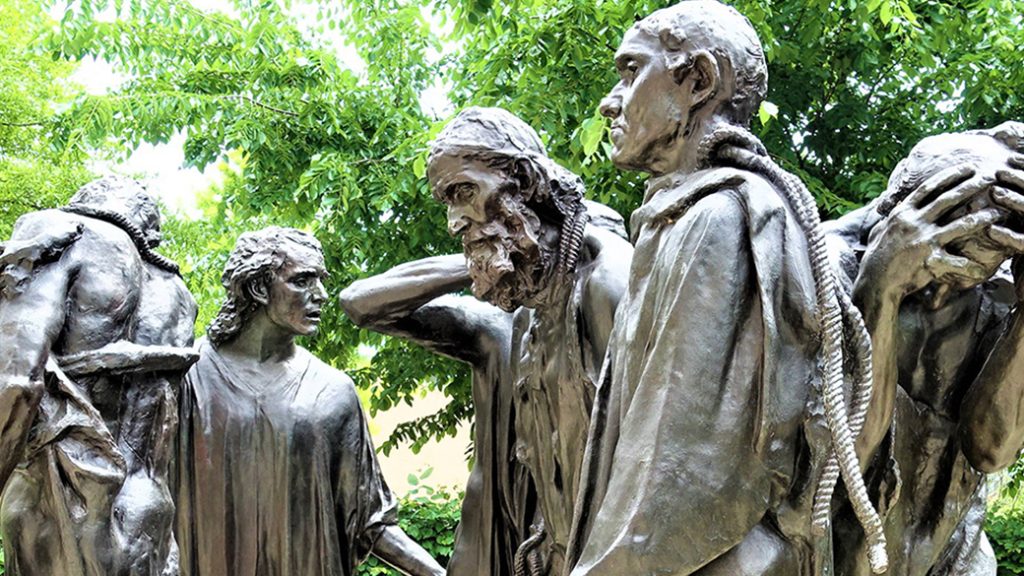
The Burghers of Calais is one of the masterpieces of the famous French sculptor Auguste Rodin. Although Rodin is famous for his sculpture ‘The Thinker’, the importance of this sculpture to the history of sculpture cannot be underestimated. This article will provide an in-depth introduction to the origin, historical background, artistic characteristics, and its impact on the sculpture industry and modern sculpture of ‘The Citizen of Calais’.
Origin and Historical Background
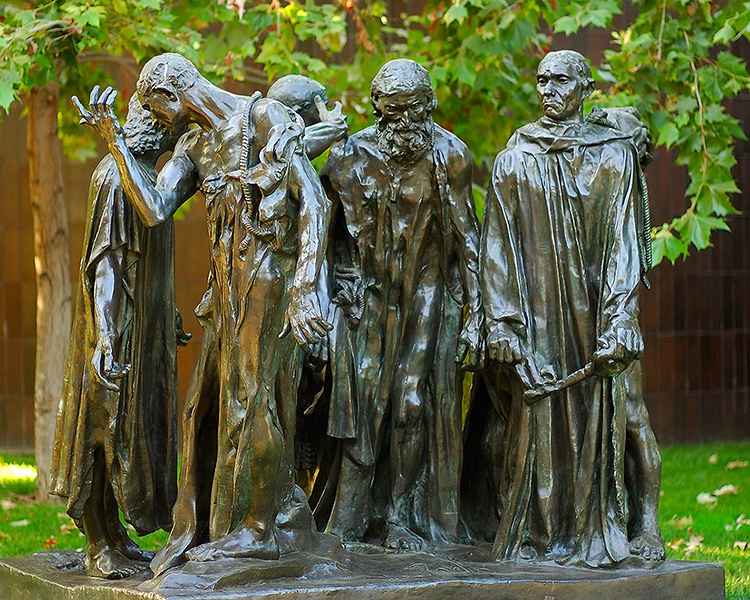
The Hundred Years’ War and the Siege of Calais
Auguste Rodin’s “The Burghers of Calais” was created to commemorate a historical event that occurred during the Hundred Years’ War (1337-1453). The Hundred Years’ War was a long-standing conflict between Britain and France, and this sculpture is related to the one-year siege of the French city of Calais. During the siege in 1346, the British army besieged Calais until six elders of the city voluntarily sacrificed themselves in exchange for Britain not harming the residents of the city. This heroic act later became a legend in history and a source of inspiration for the creation of the sculpture ‘Citizen of Calais’.
The Appearance of Sculpture
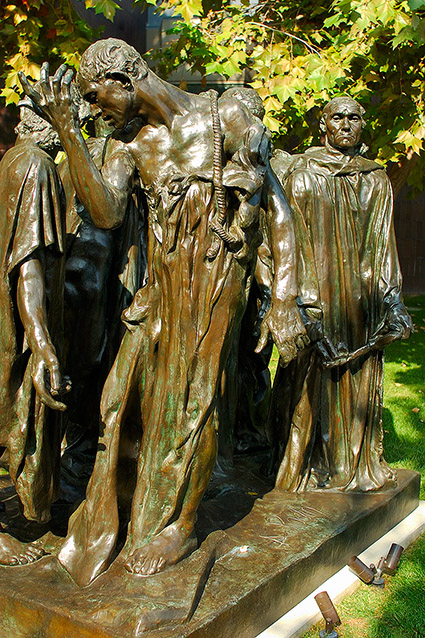
Real performance and image
The core image of “The Burghers of Calais” is six elders of the city who voluntarily surrender to save the city. These citizens are portrayed very realistically, showcasing their emotions and determination at this historical moment. Each character’s expression and posture are unique, allowing the audience to gain a deeper understanding of the emotional depth of this historical event.
High level of realism
This sculpture is famous for its stunning details and realistic character images. The audience can see the facial expressions, folds of clothing, hand movements, and body posture of each citizen, all of which enhance the realism of the sculpture.
Ground level display
Auguste Rodin adopted a display method that was completely different from the typical monumental sculpture of the time. Usually, monumental sculptures place characters in isolation on tall foundations, while ‘The Burghers of Calais’ places these real-sized citizen images directly on the ground, level with the audience’s line of sight. This groundbreaking display method breaks tradition and pursues a more realistic and close to life effect.
The impact on sculpture
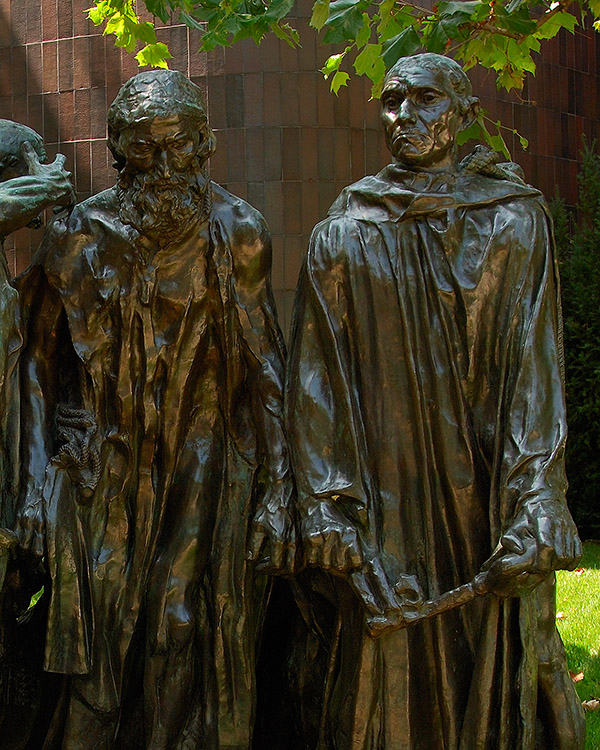
Realism of Art
The Burghers of Calais represents a major revolution in the field of sculpture. Traditional monumental sculptures often idealize characters and place them on tall foundations to showcase heroism. However, Rodin’s works emphasize the importance of realism and humanity by placing characters at the ground level. This marks a major step towards modernism in sculpture art.
Emotional resonance with the audience
This sculpture sparked a strong emotional resonance among the audience. The audience can feel the sacrificial spirit and firm determination of the citizens, and this emotional resonance makes the sculpture more deeply rooted in people’s hearts.
Breakthroughs in Sculpture Techniques
Rodin’s skill and attention to detail made him an outstanding artist in the field of sculpture. His works emphasize the complexity of sculpture and require artists to delve deeper into character form and emotional expression.
Artist’s Legacy
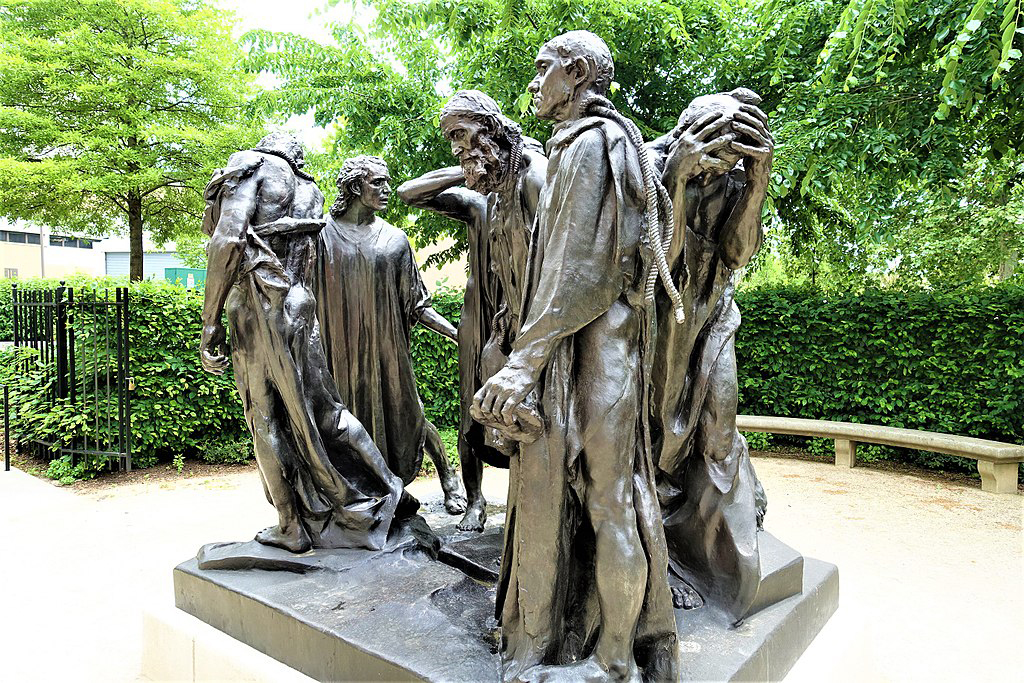
The influence of Rodin
Auguste Rodin is known as one of the founders of modern sculpture. His works have influenced countless later artists, inspiring them to explore new ways of expression and creative themes.
The Art of Long Life
Although “The Burghers of Calais” was created in the late 19th century, its influence continues to exist in the contemporary art world. The realistic style and attention to human nature of this sculpture still inspire artists, making it one of the immortal masterpieces in art history.
Epilogue
The Citizen of Calais is a masterpiece by Auguste Rodin, representing a major breakthrough in the field of sculpture and marking the transformation of sculpture from tradition to modernity. This sculpture deeply expresses real characters and emotions, allowing the audience to feel the authenticity and emotional depth of historical events. Its influence persists and continues to inspire artists to create more profound works, becoming an eternal treasure of sculpture art.

